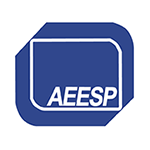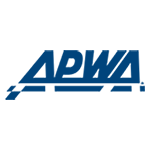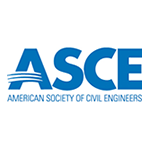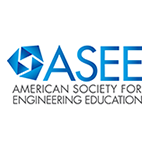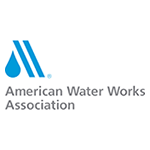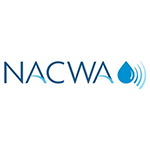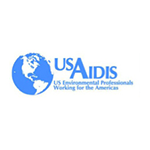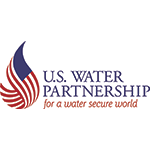- Home
- Contact Us
- News & Events
- Awards
- AAEES Awards Criteria
- 40 Under 40 Recognition Program
- Edward J.Cleary Award
- Excellence in Environmental Engineering and Science Education
- Gordon Maskew Fair Award
- Honorary Member
- International Honorary Member
- Ralph and Joe Bales Graber Science Award
- Stanley E. Kappe Award
- Environmental Communications Awards Competition
- Excellence in Environmental Engineering and Science Competition
- The AAEES Chapter Blue Marble Award
- Resources
- AAEES Microcredentials
- Annual Reports
- AAEES Press Releases
- AAEES Website How To VIdeos
- Environmental Engineer and Scientist
- Environmental Engineering Body of Knowledge
- PFAS Resources
- Specialty Examination Guide
- Students and Young Professionals Resources
- Who's Who in Environmental Engineering & Science®
- Leadership Opportunities
- Membership
- Donate
- Jobs
SELECTING CONSULTANTS“Selection of the Consulting Engineer is one of the most important of the Client’s decisions during development of any engineering project. Upon the experience, skill, integrity, and judgment of the Engineer rest the cost, suitability, and structural soundness of the proposed work for its intended function. The Engineer’s decisions based on these factors affect costs that influence the economic feasibility of the entire undertaking.” American Society of Civil Engineers. “Consulting Engineering - A Guide for the Engagement of Engineering Services,” Manual of Practice No. 45, 1981. P. 10. Organizing to Select a ConsultantThe Owner must properly prepare to select a consultant. First, and most important, the Owner must define what it is the Owner wants the Consultant to do. In some cases, this may be a very general statement of the performance required of the project. At the other extreme, it can be a well-detailed design program. Second, the Owner must define the role the Consultant is to fulfill in the team that will carry out the project. Design is a process that takes a project from conception to operation. Along the way, many steps are involved and the Consultant can fulfill a variety of functions. Also, Consultants can supply many engineering and related services other than design. Only if the Owner can clearly define the role(s) the Consultant is to fulfill, is he or she prepared to judge which Consultant is best equipped to serve his needs. Third, the Owner needs to establish procedures and policies that will be universally applied during the selection of the Consultant. An essential ingredient in such procedures and policies is fairness. An Owner that selects a Consultant with fairness to all will build lasting relationships both with the firm selected and those not chosen. Competing for a consulting engagement is an expensive undertaking for any Consultant under any set of conditions. It is in whole (usually), or in part, an overhead cost the Consultant must recover from on-going operations. It is unfair to encourage a firm to compete if they have no chance for selection. Policy for SelectionThe Owner should have an established policy and criteria to govern the selection of the Consultant. This policy and the related criteria may change from project to project. However, for each competition the criteria should be established in advance of beginning the selection process and made available to all interested persons and firms. “Some of the factors that should be considered are:
Information for SelectionConsultants interested in an engagement will supply information about their qualifications. In addition to the specific information requested and supplied by the Consultant, the Owner can take advantage of other sources of information regarding the Consultant’s credentials such as other clients and state licensing boards. The Academy recommends the following language be included in Requests for Qualifications and Requests for Proposals for Environmental Engineering services: (Owner organization’s name) encourages the consultant’s key project staff to be Board Certified Environmental Engineers (BCEE) or Board Certified Environmental Engineering Members (BCEEM) of the American Academy of Environmental Engineers and Scientists (AAEES) and requests that you identify BCEEs/BCEEMs assigned to the project, as well as the total number of AAEES Board Certified Engineers employed by the firm. A key information source to those seeking environmental engineers is specialty certification provided by the American Academy of Environmental Engineers and Scientists. The minimum requirements for specialty certification — a formal education, and eight (8) years of environmental engineering experience — coupled with the examination and peer review process provide independent testimony regarding the Engineer’s satisfaction of several of the evaluation factors recommended by the American Society of Civil Engineers. NOTE: A more complete description of the procedures involved in selecting consulting engineers is provided in the ASCE Manual of Practice No. 45. That publication may be purchased from the American Society of Civil Engineers, 1801 Alexander Bell Drive, Reston, Virginia 20191-4400, 1-800-548-2723 or www.asce.org. SELECTION PROCEDURES AND FORMSTo achieve the objectives in retaining consulting environmental engineers described in the section, “Selecting Consultants”, a systematic approach ensures the best possible result. The preferred approach includes the following steps:
The pre-qualification phase in this approach helps limit the number of proposers to those best-qualified for the assignment and avoids wasted efforts by consultants. The key information to be acquired in the qualifications phase is:
It is the responsibility of those initiating the project to conceptually define their engineering needs in a comprehensive Request for Proposals (RFP). It remains for the qualified consulting engineer to translate those concepts into a realistic and creative work program. Creativity in meeting the project’s needs is the consultant’s primary attribute. The proposal process allows those initiating the project to assess which firm can best serve the project needs BEFORE the consultant is selected and a contract negotiated. The importance of this process is evident in the realization that in capital projects, the consultant’s fee is on the order of 1% of the project’s life-cycle cost, yet the consultant has a major impact on the other 99%. A model format for use in preparing an RFP is included on the following pages. This model stresses fairness to all concerned by making as clear as possible the client’s needs — technical requirements, expectations, schedule limitations, cost constraints, etc. — the nature and extent of the competition, the method of selection, and the resources the consultant can draw upon in preparing the proposal. Throughout the model format parenthetic bold face italic type is used to call attention to information to be inserted by the person preparing the RFP. An example of this convention in presentation is: (Type of Services). COVER LETTER (Date) (Name) Dear (Greeting) REQUEST FOR PROPOSAL — (Type of Services) (Project Title) A Request for Proposal (RFP) to provide (Type of Services) services related to the (Project Title) Project is enclosed. The firms receiving this RFP are as follows: (List Firms) This RFP includes the following:
Proposals should be presented in accordance with the specified requirements in Attachment I. Supplementary material such as exhibits, biographical information, and other documentation may also be submitted separately bound from the proposal. Six copies of the proposal must be submitted to the Engineering Division no later than (Time and Date). District staff will be available for meetings with individual firms to discuss the proposed project and answer questions. A meeting, if desired, should be scheduled through (Contact Person’s Name). Proposals will be evaluated by District staff in accordance with the selection criteria specified in Attachment IV. Interviews will be conducted on (Date of Interviews). The consultant selection process will be followed by contract negotiations. It is expected that the selected consultant should be ready to proceed with (Type of Services) on or about (Date to Proceed with Services). (Include any additional information which the consultant may need to know, e.g., CEQA information) Questions concerning this RFP should be directed to (Contact Person) at (Telephone No.) Sincerely, (Name of Originator of RFP) (Title of Originator of RFP) Attachments ATTACHMENT I PROPOSAL SUBMITTALS A. PROPOSAL FORMAT The proposal is required to contain the following information and should be (Limit Number of Pages Desirable) pages (excluding cover, title sheets, dividers, etc.) SECTION 1 — Approach
SECTION 2 — Project Organization
SECTION 3 — Schedule Work schedule for tasks described in Attachment II and Approach. Include expected starting dates and completion dates referenced to Notice to Proceed. State assumptions for time requirements. SECTION 4 — Personnel Effort An estimate of the required personnel hours, by task and job title, for performing (Type of Services). SECTION 5 — Management Control Program
SECTION 6 — Experience and References
B. APPENDIX (AS NEEDED) ATTACHMENT II PROJECT SCHEDULE Task Estimated Schedule Consultant Selection Date Consultant Notice to Proceed Date Project Milestones Dates (List Milestones) (Dates for each Milestone) ATTACHMENT III SCOPE OF WORK The general scope of work is described in this section. A final scope of work will be defined in the contract negotiation process. The scope of work is for (complete simple sentence description): The owner will provide the following services related to the project: (List services and information provided to the engineer.): Following is a brief description of the scope of work: (Describe the services the engineer is to provide using the most specificity possible.) ATTACHMENT IV SELECTION CRITERIA (Change Percentages as Needed) Selection of the consultant(s) will be based on both the proposal and interview. The proposal is weighed 50 percent, the interview 50 percent. Proposal Evaluation Criteria (50 Percent of Total Score)1. Specialized Experience of Firm (15 Percent) This includes specialized experience directly relating to these projects, demonstrated ability to complete the work within the required schedule and budget, quality control/assurance programs, and the depth of in-house and subcontractor support. 2. Project Personnel (55 Percent) This includes the role, commitment, and qualifications (including possession of applicable licenses and certifications) of key personnel (both the lead and subcontractor firms) and their experience in the areas assigned. Principal-In-Charge 10 Percent Project Manager 30 Percent Project Engineer 15 Percent It is preferred that the Principal-in-Charge, Project Manager, and Project Engineer possess appropriate specialty certifications. 3. Approach to Work (20 Percent) This includes the approach to the project scope outlined in Attachment III, the understanding of the project scope and schedule of work, and the interfacing of tasks. 4. Other Considerations (10 Percent) This includes comments received from references and unique/creative approaches to work. Interview Evaluation Criteria (50 Percent of Total Score)Presentation (20 Percent)
Questions and Answers (50 Percent)Questions will be both technical and managerial in nature.
Project Team (30 Percent)
ATTACHMENT V BACKGROUND DOCUMENTS (List the background documents that will be made available to the Engineer in preparing the proposal and how they will be made available.) |


